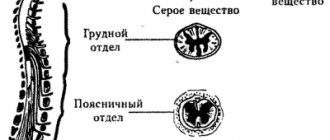There is living and nonliving matter on this planet. This type of matter is known as poured matter . This is a substance that does not enter into chemical or biological reactions. It cannot form compounds and remains unchanged under certain high temperature conditions. The lack of biological activity means that it is inert, dead and insensitive matter.
In this article we will tell you about all the characteristics, importance and benefits of the inert substance.
The phenomenon of inertia
It is common for any person that a thrown stone, when taken away from the hand, continues to move and flies on its own, although the force of the hand no longer acts on it.
The phenomenon that bodies maintain their speed when no other bodies act on them is called the phenomenon of inertia.
Examples of inertia include not only thrown stones, but also any other objects that move freely and not necessarily in a straight line. The spinning flywheel also rotates for some time by inertia, and on this basis there are even toys with an inertial mechanism that can move for quite a long time after starting.
Rice. 1. Toys with an inertial mechanism.
The phenomenon of inertia is not as obvious as it seems. For example, for light bodies, like fluff, there seems to be no inertia. Moreover, since the time of Aristotle it was believed that in order for a body to move uniformly and in a straight line, a constant action of an external force is necessary.
Only during the Renaissance did doubt arise about the correctness of ancient philosophers. G. Galileo formulated the law of inertia, which sounds as follows: in the absence of the influence of other bodies, the body always maintains either a state of rest or rectilinear and uniform motion. Therefore, such a movement that is performed by a body without the influence of other bodies is called “motion by inertia.” This statement was later generalized by I. Newton in his first law of mechanics.
Rice. 2. Newton's first law.
The misconception of ancient philosophers is based on the fact that in the real world, as a rule, it is impossible to create conditions under which a body would not experience the influence of other bodies. There are always at least two forces acting on a moving body: gravity and friction. And if the influence of gravity can be eliminated by moving perpendicular to its vector, then the force of friction can be almost impossible to eliminate. For high speeds and for bodies of large surface area (compared to weight), the force of air resistance also becomes significant, so formulas of motion must take it into account.
Características principales
Inert substances of any type are very common in everyday life. Anything that does not move, breathe, eat, or interact with its environment is an inert substance. It is only in one place due to the mass and volume it occupies. . For example, we see that inert matter is easily found in our house in a chair, a piece of metal, stones, bricks, sand, etc. For example, it is curious that from some Lego blocks. This is something that is completely inert, since they are not living, and no metabolic processes are developing inside.
However, one of the questions facing it is what happens to its chemical reactivity. We know that Lego plastics are completely indigestible to stomach acids and any harsh substances. If they are not digestible, they can be classified as inert materials. In nature you don't see Lego blocks, but rather rocks and minerals. These are inert inorganic bodies that do not react biologically, but react chemically. Thanks to the chemical reactions that take place in them, the metals that support much of all human industrial and technological development can be extracted from them.
Inertia of bodies
When comparing the movement of bodies by inertia under the influence of environmental resistance, you can notice that this movement can be different, even if the environmental resistance is the same.
For example, if you take metal and foam balls of the same size, then after throwing the metal ball will fly much further than the foam ball, although the initial speed and dimensions of both balls (and therefore the resistance force) will be the same. The difference in the behavior of the balls here is explained by the fact that they have different inertia.
The inertia of bodies is a property consisting in the fact that it takes some time to change the speed of a body, the longer the greater the inertia of the body. The measure of inertia of bodies is a special physical quantity - mass.
This is why a metal ball will fly further than a foam ball: its mass is greater, therefore its inertia is also greater, and the same resistance force takes more time to stop it.
Rice. 3. Inertia of bodies.
Questions
1. Look at the picture with formulas for calculating the moment of inertia for bodies of different shapes. Which formula do you think is better suited for calculating the moment of inertia of a car flywheel? Answer options: a, b, c, d, e, f, g, h, or i
Car flywheel
2. Two tops of the same mass are spun to the same angular velocity, but the diameter of the first top is smaller than the diameter of the second. Which one will fall first?
3. The figure shows three design options. Which version of the machine has the least inertia, and which has the maximum? Why?
Video:
- Inertia. GetAClass
- Moment of inertia. GetAClass
- Moment of inertia of rotating bodies. Experiment. Dependence of moment of inertia on mass distribution
- Moment of inertia of rotating bodies. Experiment. Rolling cylinders from an inclined plane of the same mass and size
- Moment of inertia of rotating bodies. Figure skating. Yulia Lipnitskaya, rotation
- Moment of inertia. Engine operation with and without a flywheel
Articles:
- Newton's first law and inertial frames of reference
- Newton's second law
- Resultant
- Newton's third law
- Non-inertial reference systems
examples
Let's look at some examples of inert matter:
- Objects and Materials: All the rigidity that we see around is considered inert matter until it is alive, because it is alive to be considered living matter. We can install some examples such as cloth, calculators, light bulbs, paper, glass, well, stones, on the table, chair, switches, etc.
- Nitrogen: It is a completely inert gas because the body does not metabolize it when we breathe and it is very slightly reactive. It has very strong jumpers, making it virtually non-reactive. Some of their reactions occur during thunderstorms. It may also happen that it reacts when certain metals are overheated.
- Biodegradable plastic : These are biologically inert materials. Since they can be digested by microorganisms that break down said plastic, it still doesn't have a life of its own. If we analyze it from a clinical point of view, they are not completely inert as they can dissolve in some solvents to become corrosive.
- Fossils: Being dead creatures trapped in rock, they are considered an inert substance as there is no life or degradation in it.
- Noble Gases: We mentioned earlier that these gases, along with nitrogen and carbon monoxide, are the least naturally reactive gases.
I hope that with this information you can learn more about what an inert substance is and what its characteristics are.
Types of inert substance
There are different types of inert substance. Let's see what they are like
Biological inert substance
This type of inert substance must meet some characteristics, which we are going to mention below from a biological point of view:
- Indigestible : This means that it is a type of material that is not digestible by normal organisms. However, there are some bacteria on this planet that can digest these types of substances. They can ruin almost any object. These types of bacteria are the subject of intense research.
- Does not establish any relationship : Symbiosis is a type of relationship between living things. Maintain, but establish any type of symbiosis. This means the absence of interaction at the cellular level with any microorganisms. There are no cells in it, not even dead ones. Among the characteristics of inert matter is that it remains completely indifferent to its environment. It does not matter whether it is an aquatic, plant or terrestrial environment. It does not provide any nutrients, but can provide shelter for some species.
- No life: This characteristic is important for the possibility of biological differentiation from living matter. This is the first thing that comes to mind when we use this term. When we talk about something integral, we directly distinguish between something living and dead. A decaying corpse is not alive, so it is inert. However, there are many microorganisms and insects that feed on its tissues and fluids. Therefore, although the corpse is not alive and does not enter into symbiosis, it is digested or assimilated. Since inert matter has no life, it is expected that it does not move or moves on its own. But there are exceptions. It is an inanimate object or element of natural or artificial origin that can be dislodged by the action of some external geological factors such as wind or water.
Chemical inert substance
It is considered inert from a clinical point of view. That is, the characteristics that we mentioned above have nothing to do with this type of matter. There are several examples, such as the ego block mentioned above, which is indestructible. Teflon in pans is also inert both biologically and chemically. Let's see what are the characteristics of a chemical inert substance:
- Under normal conditions they do not react: It should not react at room temperature or atmospheric pressure. It can be maintained even at moderately higher temperatures and pressures.
- Has very strong links: being able to have chemical stability is that they don't react, they maintain very strong bonds. If it does not offer stronger bonds, it may react due to its chemical properties. The key point is the lack of connection stability. The more complex the tensile strength of the bond, the more important the inert mass. Since its links are a part, it is to be expected that corrosive substances can neither destroy nor destroy this material.
- You don't need electrons: Most substances react to produce new electrons and some energy stability. There is no need to gain or lose electrons in this substance, so no type of chemical reaction is involved. This usually occurs in the known noble gases, which are inert substances.
- Reacts very slowly: It is also possible to recognize as an inert substance something that reacts very slowly. Molecules have a specific structural geometry that makes it impossible for them to react noticeably or usefully.










